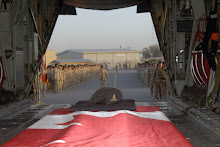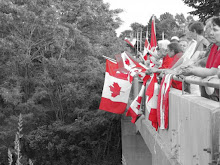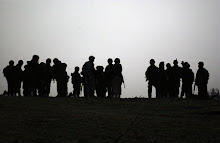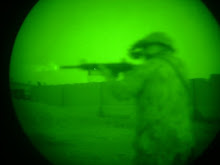Gerald Flood GERALD FLOOD CANADIANS were reminded again last week that it is members of their armed forces who pay a price in blood for the failure of previous governments to pay the cost in dollars of properly equipping them.
On Wednesday, six Canadian soldiers in Afghanistan were wounded by roadside bombs. Four of those injuries, and damage to the armoured vehicles they were operating to resupply outposts, would have been prevented had the Canadians been doing what their coalition partners do -- resupply by air with heavy lift helicopters.
Canada doesn't resupply by air because it can't. Its ancient Sea King helicopters are unreliable in the best of conditions, and the high deserts of Afghanistan represent some of the worst possible conditions, even for new choppers.
But that's about to change, and if common sense prevails, it could change very quickly.
Beginning tomorrow and continuing through the week, Prime Minister Stephen Harper is expected to roll out $15 billion of spending on military equipment. What exactly will be announced cannot be known until the actual announcements are made. The consistency of lists provided to national news sources, however, suggests that it will include: z Two new supply ships that can double as helicopter platforms so as to be able to refuel our frigates at sea while also being capable of supplying troops on the ground while standing offshore in, say, the Persian Gulf. Our two existing supply ships are more than 40 years old and lack a lot of modern mechanization that could cut crew size by half to about 150 sailors. A big saving, that.
z - A fleet of new transport trucks to replace the 25-year-old transports now in service at an estimated maintenance cost of $25,000 a year each.
z - Heavy lift helicopters like the Chinooks that the Mulroney government foolishly sold to the Dutch in the early 1990s. The Dutch are using some of those aircraft today in Afghanistan while Canadian soldiers are being injured for lack of them.
z - Heavy lift transport planes capable of short runway takeoff and in-air refueling so as to be able to move Canadian personnel and equipment anywhere in the world.
That Canada lacks such equipment is a disgrace that the former Liberal government must wear despite its deathbed conversion to military spending when it finally realized that you can't ramp up military commitments or expound a "responsibility to protect" philosophy if there's no ramp to up or ability to protect.
Former prime minister Jean Chretien, who infamously scrapped a contract to buy new helicopters on taking office, claimed there were no votes in military spending, and perhaps that was true and remains true.
But I suspect that if it was true, it was cynical to act -- or not act -- on it.
I further suspect that after more than a decade of embarrassment, as our helicopters fell from the sky while our used submarines could not dive in the sea, and after seeing Canadians hitch-hike into harm's way without proper kit, that there are votes in military spending if for no other reason than Canadians feel guilty about not doing it sooner regardless of where they stand on peacemaking.
But now, having brought us to a point where massive layouts are required to fix the backlog, the opposition parties are playing politics with the issue by warning that Harper might skirt tendering practices and won't get sufficient spin-off benefits for Canadian industries.
In theory that might be a good line to take, but in practice what is needed now is common sense to ensure the equipment is brought on line as quickly as is possible.
You can almost bet we won't be tendering for ships. Expect all parties to see the wisdom of sending that work to shipyards in Quebec and the Maritimes.
Going to tender for aircraft would ensure Canada was at the end of production lines for the Boeing C-17, the smaller Airbus A-400 and the even smaller new version of the familiar Hercules. Holding a competition for three different aircraft that perform three different functions makes no sense. Better is to decide what you want, and what's available quickly.
That would be the C-17, which Canada could buy directly from the U.S. Air Force, as Australia did. With luck, those planes would be in service by this time next year instead of four and more years out.
The opposition fulminates about ensuring that Canada gets the bulk of maintenance work for the C-17s but doesn't answer the question: Why build a maintenance facility for four or six planes? The Brits don't do it, nor do the Aussies.
Buying from the Yanks wouldn't be fair to our European friends, they say. Maybe not. But it would be just as fair as it was when those same friends cut Canada's Pratt and Whitney out of the competition to build Airbus engines in order to keep the jobs in Europe.
Having asked nicely once for C-17s, why not ask twice for Chinooks? The U.S. Army has an order in for 460 of the new Foxtrot Chinook, also made by Boeing. Could they sell us six or eight right now? We're familiar with the Chinook. We once owned them, after all.
And if the Americans agree, could Canada not come to some pact with Boeing for future considerations, perhaps building parts for the next generation of jets under design to replace the 737? Defence analyst and former Winnipegger David Rudd thinks that's a better and more creative way to pursue spin-offs for Canadian industries.
Trucks? It seems odd that Harper is scheduled to announce a truck package in Quebec -- aerospace central. And it is odd until you learn that Oerlikon Aerospace builds armoured cabs for U.S. Army supplier Stewart and Stevensen. Bet they'd be happy to build 500 or 750 more armoured cabs for a Canadian fleet of, say, 1,000.
The tack the opposition is taking -- save Liberal Senator Colin Kenny who wants the Tories to do even more -- on a common sense procurement agenda for jumbos, helicopters and trucks is hypocritical, wrongheaded and potentially harmful to our military.
We need the kit now. Let's get it.
PUBLICATION: WINNIPEG FREE PRESS
DATE: 2006.06.25











